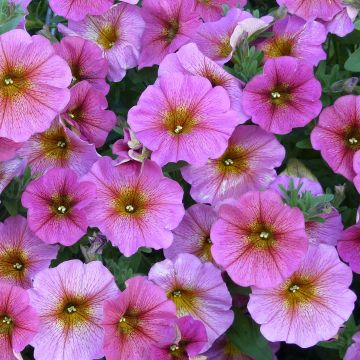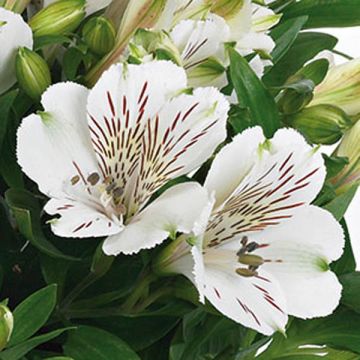

Fuchsia hybrida Annabel


Fuchsia hybrida Annabel
Fuchsia hybrida Annabel
Fuchsia x hybrida Annabel
Trailing Fuchsia
My package was mishandled during shipping, the young plant received had come out of its bucket, I hope it will recover.
Marie Agnès , 30/03/2025
Special offer!
Receive a €20 voucher for any order over €90 (excluding delivery costs, credit notes, and plastic-free options)!
1- Add your favorite plants to your cart.
2- Once you have reached €90, confirm your order (you can even choose the delivery date!).
3- As soon as your order is shipped, you will receive an email containing your voucher code, valid for 3 months (90 days).
Your voucher is unique and can only be used once, for any order with a minimum value of €20, excluding delivery costs.
Can be combined with other current offers, non-divisible and non-refundable.
Home or relay delivery (depending on size and destination)
Schedule delivery date,
and select date in basket
This plant carries a 6 months recovery warranty
More information
We guarantee the quality of our plants for a full growing cycle, and will replace at our expense any plant that fails to recover under normal climatic and planting conditions.


Would this plant suit my garden?
Set up your Plantfit profile →
Description
The Fuchsia 'Annabel' is a very floriferous upright variety, with large light double flowers. They appear almost white in the shade, with their outer sepals turning pink in the sun. They are enhanced by candy-pink stamens. A relatively hardy variety, which tolerates the sun very well, simply magnificent in the garden, in containers or hanging baskets.
There are countless hybrid fuchsias, derived, for the most part, from a combination of Fuchsia magellanica and Fuchsia fulgens, sometimes with a contribution from Fuchsia triphylla, adding length to the flowers which are then characterized by thin tubes and leaves with a purplish back. All these herbaceous to woody plants, more or less hardy and more or less upright or trailing, belong to the Onagraceae family.
The Fuchsia 'Annabel' or 'Annabelle' is a fairly old variety of great beauty. It forms a small upright bush with a height of 50 to 60 cm (19.7 - 23.6 in) when in flower and 30 to 40 cm (11.8 - 15.7 in) wide. It flowers from June-July to September-October. It is distinguished by long pendulous corollas reaching 10 cm (3.9 in). They are composed of a long tube extended by 4 long and curled sepals, white to pale pink, and a crown of wider and shorter petals, double, white-cream veined with pale pink set into in the outer corolla. Long tender pink stamens complete the colour harmony. The stems become woody over the course of the season. The fairly dark green leaves, 5 to 8 cm (2 - 3.1 in) long, are deciduous, whorled and lance-shaped.
Usually grown as an annual, this fuchsia is a perennial that can be grown indoors, but also outdoors where frost is not too severe. Its hardiness ranges from -5°C to -10°C depending if the plant is protected in winter.
Discovered in Santo Domingo in the 17th century and spread throughout Europe, it was named Fuchsia (not Fuschia) in honour of a German botanist named Fuchs. Native to South America, Fuchsias have gradually been multiplied and there are now said to be tens of thousands of hybrids!
Small plants measuring 4 to 8cm (1.6 - 3.1 in) in trays of 5 small plugs measuring 2.8 cm (1.1 in) in diameter and 4 cm (1.6 in) in height. Our plants are at least eight weeks old and are strong enough to be planted in open ground.
Note: Please be aware that our young plug plants are professional products intended for experienced gardeners: upon receipt, transplant and store them under cover (conservatory, greenhouse, cold frame...) at a temperature above 14°C for a few weeks before being planted outdoors once the risk of frost has passed.
Fuchsia hybrida Annabel in pictures




Flowering
Foliage
Plant habit
Botanical data
Fuchsia
x hybrida
Annabel
Onagraceae
Trailing Fuchsia
Cultivar or hybrid
Other Fuchsia
View all →Planting and care
Plant your hybrid fuchsias in a rich, moist, and well-drained soil, in full sun or partial shade. Fuchsias need plenty of light to flower well, but they do not tolerate direct sunlight in the summer. Water regularly, as they are sensitive to drought, but avoid excessive watering. When grown in pots, make sure not to leave water in the saucer, as it can cause root rot and leaf drop. Feed with a liquid fuchsia fertilizer every 15 days during the growing season. Deadhead regularly and remove dry leaves. Prune in autumn after flowering. Fuchsias can also be grown indoors where they will be perennial and evergreen.
Planting period
Intended location
Care
Planting & care advice
-
, onOrder confirmed
Reply from on Promesse de fleurs
Similar products
Haven't found what you were looking for?
Hardiness is the lowest winter temperature a plant can endure without suffering serious damage or even dying. However, hardiness is affected by location (a sheltered area, such as a patio), protection (winter cover) and soil type (hardiness is improved by well-drained soil).

Photo Sharing Terms & Conditions
In order to encourage gardeners to interact and share their experiences, Promesse de fleurs offers various media enabling content to be uploaded onto its Site - in particular via the ‘Photo sharing’ module.
The User agrees to refrain from:
- Posting any content that is illegal, prejudicial, insulting, racist, inciteful to hatred, revisionist, contrary to public decency, that infringes on privacy or on the privacy rights of third parties, in particular the publicity rights of persons and goods, intellectual property rights, or the right to privacy.
- Submitting content on behalf of a third party;
- Impersonate the identity of a third party and/or publish any personal information about a third party;
In general, the User undertakes to refrain from any unethical behaviour.
All Content (in particular text, comments, files, images, photos, videos, creative works, etc.), which may be subject to property or intellectual property rights, image or other private rights, shall remain the property of the User, subject to the limited rights granted by the terms of the licence granted by Promesse de fleurs as stated below. Users are at liberty to publish or not to publish such Content on the Site, notably via the ‘Photo Sharing’ facility, and accept that this Content shall be made public and freely accessible, notably on the Internet.
Users further acknowledge, undertake to have ,and guarantee that they hold all necessary rights and permissions to publish such material on the Site, in particular with regard to the legislation in force pertaining to any privacy, property, intellectual property, image, or contractual rights, or rights of any other nature. By publishing such Content on the Site, Users acknowledge accepting full liability as publishers of the Content within the meaning of the law, and grant Promesse de fleurs, free of charge, an inclusive, worldwide licence for the said Content for the entire duration of its publication, including all reproduction, representation, up/downloading, displaying, performing, transmission, and storage rights.
Users also grant permission for their name to be linked to the Content and accept that this link may not always be made available.
By engaging in posting material, Users consent to their Content becoming automatically accessible on the Internet, in particular on other sites and/or blogs and/or web pages of the Promesse de fleurs site, including in particular social pages and the Promesse de fleurs catalogue.
Users may secure the removal of entrusted content free of charge by issuing a simple request via our contact form.
The flowering period indicated on our website applies to countries and regions located in USDA zone 8 (France, the United Kingdom, Ireland, the Netherlands, etc.)
It will vary according to where you live:
- In zones 9 to 10 (Italy, Spain, Greece, etc.), flowering will occur about 2 to 4 weeks earlier.
- In zones 6 to 7 (Germany, Poland, Slovenia, and lower mountainous regions), flowering will be delayed by 2 to 3 weeks.
- In zone 5 (Central Europe, Scandinavia), blooming will be delayed by 3 to 5 weeks.
In temperate climates, pruning of spring-flowering shrubs (forsythia, spireas, etc.) should be done just after flowering.
Pruning of summer-flowering shrubs (Indian Lilac, Perovskia, etc.) can be done in winter or spring.
In cold regions as well as with frost-sensitive plants, avoid pruning too early when severe frosts may still occur.
The planting period indicated on our website applies to countries and regions located in USDA zone 8 (France, United Kingdom, Ireland, Netherlands).
It will vary according to where you live:
- In Mediterranean zones (Marseille, Madrid, Milan, etc.), autumn and winter are the best planting periods.
- In continental zones (Strasbourg, Munich, Vienna, etc.), delay planting by 2 to 3 weeks in spring and bring it forward by 2 to 4 weeks in autumn.
- In mountainous regions (the Alps, Pyrenees, Carpathians, etc.), it is best to plant in late spring (May-June) or late summer (August-September).
The harvesting period indicated on our website applies to countries and regions in USDA zone 8 (France, England, Ireland, the Netherlands).
In colder areas (Scandinavia, Poland, Austria...) fruit and vegetable harvests are likely to be delayed by 3-4 weeks.
In warmer areas (Italy, Spain, Greece, etc.), harvesting will probably take place earlier, depending on weather conditions.
The sowing periods indicated on our website apply to countries and regions within USDA Zone 8 (France, UK, Ireland, Netherlands).
In colder areas (Scandinavia, Poland, Austria...), delay any outdoor sowing by 3-4 weeks, or sow under glass.
In warmer climes (Italy, Spain, Greece, etc.), bring outdoor sowing forward by a few weeks.



























































